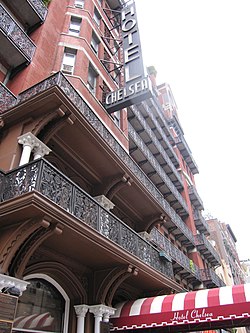I am loving reading Just Kids. The world of Patti Smith seems at times almost surreal; the stuff of legends. Her encounters and exploits could fill many different lifetimes and she goes through things that I’ve never imagined having to face. At the same time, though, I feel as if I can relate to her. She moved away from her family, venturing into New York City with very little idea of what her future would hold. I sympathize with her longing for art and her wish to be a creative, creating soul. I feel for her struggle maintaining steady employment. I understand her love for Robert, and their loyalty to eachother through it all.
I think all of us can find part of ourselves in Just Kids. Its events took place years ago in the 60s and 70s, and the music, clothes, and politics were all different. One thing, however, never changes. We are all humans with human faults. We all struggle sometimes. We all face trying times.




